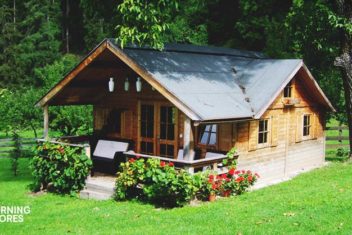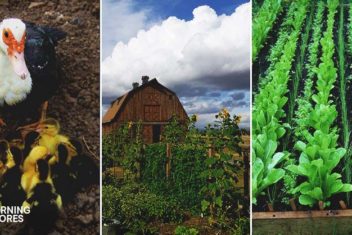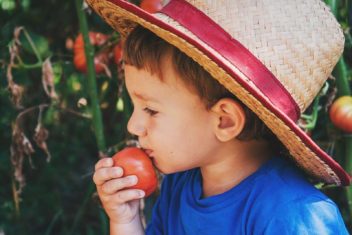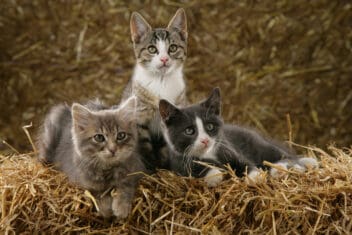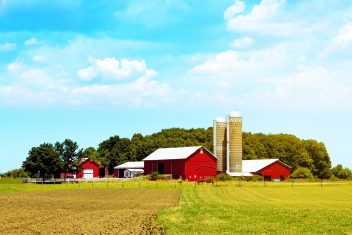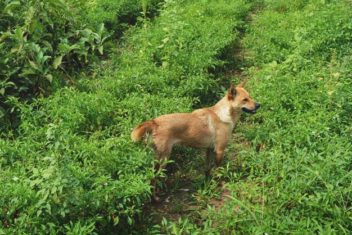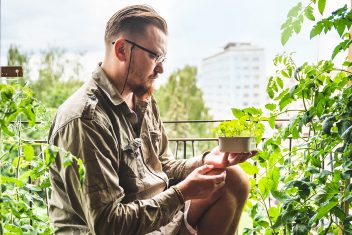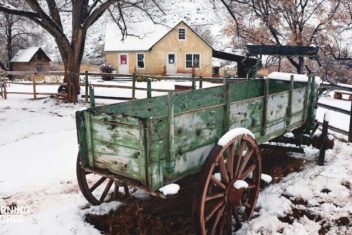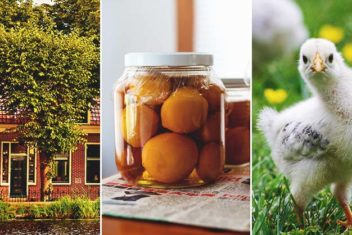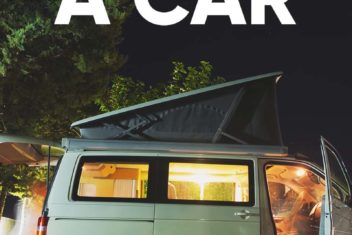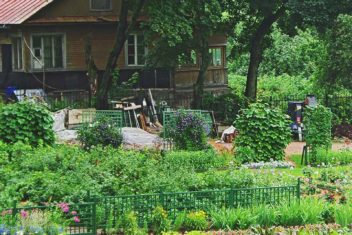Minimalism is a bit of a buzzword these days. It has a lot of different meanings depending on who you ask. I like this description:
Minimalism is a tool to rid yourself of life’s excess in favor of focusing on what’s important—so you can find happiness, fulfillment, and freedom.
The Minimalists
When you put it that way, it seems like something that can be used on the homestead. I would even argue that us homesteaders doing so much from scratch, have to be minimalists of a sort. If we don’t favor what’s important, we’ll never get anything done.
But, as every homesteader knows, homesteading seems to require a lot of stuff. You need your gardening tools, your livestock-related items, all your stored food, food equipment, construction tools, fencing materials, and about a million other things.
Sometimes it seems like homesteading is more about having stuff than doing stuff. So, how in the heck can you be a minimalist homesteader?
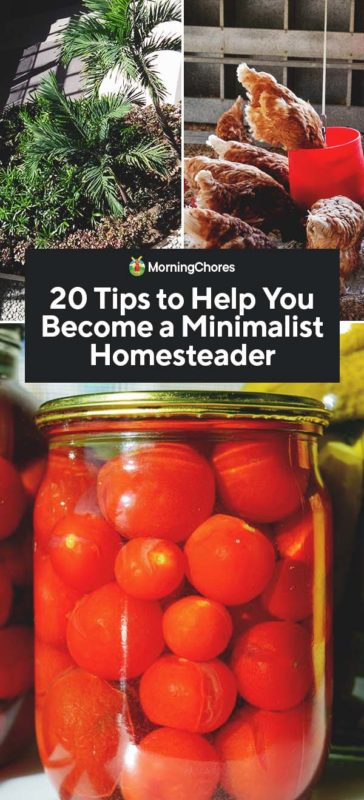
Can a Homesteader Be a Minimalist?
Now, believe me, I understand that there are some things you have to store. Of course, you need a place for all those extra potatoes, onions, and sweet potatoes you grew for winter eating.
You may also have a few years worth of country hams hanging around developing that fantastic funk that tastes remarkably like fine prosciutto. Oh, and then, there are all those specialized tools required to do your homesteading activities…I get it!
Still, at its core, homesteading is about self-sufficiency not hoarding. It’s about having what you need when you need it or having the skills to get or produce what you need.
It’s not about having more than you need to the point that your stuff ends up taking all your time and space to care for and store it. Like the typical consumer, sometimes even homesteaders don’t need more storage, we simply need to pair down our processes and limit what we own to allow room for what’s really important.
Even as a homesteader, you can practice minimalism. It might not look like the urban minimalism of someone who eats out every night and professionally launders their clothes. But your life can be a whole let less cluttered than it is now.
Minimalism in the Garden

Gardening is one of the most time-consuming and labor-intensive parts of homesteading. When done with a minimalist approach though, it can be a highly effective way to move toward greater self-sufficiency without having to hoard lots of tools and equipment.
Here are some ideas to help you be a gardener and minimalist homesteader at the same time.
1. Right-size Your Garden
Trying to grow a huge garden and doing it poorly is the antithesis to minimalism. Right-sizing your garden to your skill level and time available is a better minimalist approach.
2. Down-size Smart
Unfortunately, if your current garden space is already larger than you need, you can’t just box it up and carry it down to the thrift store. But, you can transition your spaces to grow things that require much less work and maintenance from you.
Consider converting some of your beds into pollinator plots of wildflowers or easy to grow natives. Or, use them for self-seeding and perennial herbs that can double as pollinator-friendly plants when you don’t have time to harvest before they flower.
Grow allelopathic cover crops like wheat, rye, buckwheat, and mustard that you can harvest with a scythe and use in your compost pile. Alternate these every other year with equally easy to grow sunflowers for weed seed suppression.
3. Go Low Maintenance
Annual foods take a lot of work to grow, rotate, harvest, and maintain. Hardy perennials, once established, take less time and resources to maintain.
Sunchokes, blackberries, muscadine grapes, alpine strawberries, disease-resistant apple or Asian pear trees, pawpaws, elderberry, and more are all reasonably easy to grow to supplement your food supply without special equipment or much work on your part.
4. Limit Varieties
There are so many incredible heirloom fruits and vegetable varieties out there. But trying to grow them all can be overwhelming. Between storing, keeping track, making labels, and more, every variety you grow moves you further away from the simplicity of a minimalist homesteader lifestyle.
Instead, select core varieties that grow well as the foundation for your garden. Then limit yourself to experimentation with just a new variety or two each year.
5. Go No-Till
I have a 200 square foot no-till test garden that I maintain with nothing more than a compost pile, a pitchfork, a hand rake/hoe combo, a 5-gallon bucket, a watering can, and a few re-purposed feed bags.
From March to June, that small space produced 18 pounds of potatoes, 50 beets, 30 turnips, 20 kohlrabi, 6 large storage cabbage heads, 10 pounds of carrots, almost daily salads, an endless supply of kale, chard, and mustard greens, several cups of shelled peas, and herbs.
Summer harvests will include more beets and carrots, muskmelons, tomatoes, peppers, eggplant, heat-loving salad greens, beans, sweet potatoes, and sunflowers.
When you grow a well-planned, compost-driven, no-till garden, you can produce large quantities of food with little work and nothing more than a few hand tools. No tractor or shed full of garden tools required. This is about as minimalist as it gets in the garden!
6. Hand Water
If you use some of the preceding recommendations, then hand-watering won’t take much time. It’ll also save you tons of time on putting irrigation in and taking it out, storing it in winter, patching holes, sorting out clogs, and dealing with water pressure issues.
Hand-watering is as minimalist as it gets in the garden.
7. Limit Winter Storage
Some things like potatoes, sweet potatoes, garlic, onions, and pumpkins require minimal processing before storing in a safe location for later use. So, they make great minimalist choices for winter eating.
For things that require you buy and maintain a deep freezer or spend hours operating a pressure canner to make food safe from botulism, eating those things fresh and in season is a more minimalist homesteader approach.
For example, okra, watermelon, sweet corn, eggplant, and green beans can be put up for later use. But with so few calories and special equipment needed, it’s less work and more pleasurable to simply eat them as you harvest them.
Now, minimalism is all about prioritizing what’s important to you. So, if you can’t imagine winter without canned green beans then, by all means, sterilize jars and fire up your stovetop burner for a few hours at the height of summer. But, if they aren’t a passion, consider cutting winter storage on some of your vegetables.
Livestock Minimalism

Livestock is another place where we homesteaders tend to take on more than is necessary or sustainable. Taking a minimalist approach can help.
8. Limit Livestock
How many goats, chickens, pigs, rabbits, ducks, or whatever else do you really need on your homestead? A lot of homesteaders overshoot on livestock in our eagerness to advance our skills.
But right-sizing your herds and flocks means less stress, often a better result, and requires less investment in a shelter, housing, feed, fencing, and more. Take a minimalist homesteader approach to livestock by thinking through your needs and putting limits on how much livestock you’ll keep to meet them.
9. Do Dual-Purpose
Historically livestock has served multiple purposes. Chickens and ducks were used for meat and eggs. Goats and cows were used for milk and meat.
Commercialization has led to things like chickens that can only be used for eggs or dairy goats that are so productive at making milk that they are terrible at gaining muscle. However, thanks in part to the homesteading movement, there are a lot more people raising livestock that can serve multiple functions.
That means it’s relatively easy to find lineages of dual-purpose livestock to better supply all of your protein needs without having to maintain separate herds or flocks for different purposes.
10. On Demand Chicken
Along with keeping dual-purpose breeds, you can also take a minimalist homesteader approach to harvesting. Rather than raising a meat flock of say 50-100 chickens at once, consider keeping a broody hen in your flock.
Then you can have her sit some of your fertilized dual-purpose eggs a few times a year. She’ll do the hard work of raising your meat supply. All you need to do is harvest as required.
Process those fast-maturing cockerels first. Then, process the females as you need them for your meal preparation. With a little practice, you can process a single chicken in just a few minutes and save yourself all that stress and work of mass processing 50 at a time.
Plus, then you don’t have to devote so much mental energy to worry about what happens if your freezers break or the power goes out and so on. You won’t need to spend a fortune on packaging either.
Multi-Purpose Minimalism
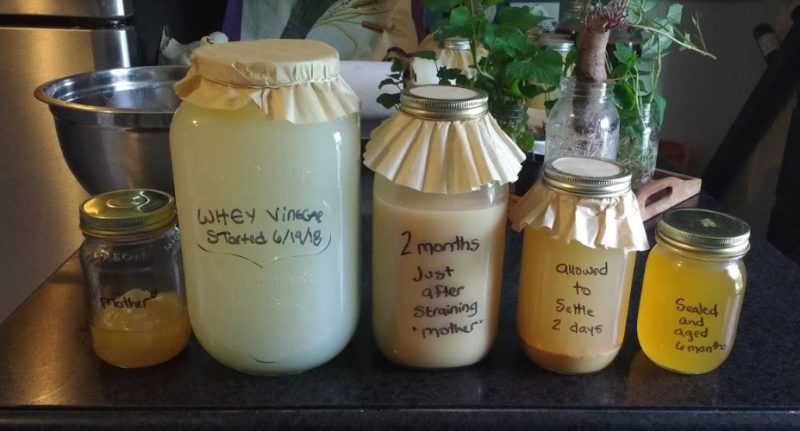
One of the things that drove me crazy about homesteading when I first started was that I felt like I had to buy something every time I wanted to learn a new skill. I am so over that!
Now, I realize that there are a lot of things that I already have that can be used for multiple purposes. Here are some examples to get you thinking.
11. Pruning Shears
The same pruning shears I use on my fruit trees work great for cut flowers, plant propagation, and goat hoof trimming. Since I clean my tools between use anyhow, there’s no reason not to use only one good pair for a whole host of applications.
12. Canning Jars
Canning jars are great for canning and about a million other things. They make perfect drinking glasses. They are excellent fermentation vessels for pickles, vinegar, wine, yogurt, kombucha and more.
They can store your dried herbs, tea blends, and spices. Put cordials and tinctures in them. Store and stratify seeds. Use them as candle holders or lanterns. Dip and measure livestock feed or fertilizer.
13. Kitchen Appliances
Your coffee grinder is not just a coffee grinder when you are a minimalist homesteader. It grinds spices and herbs. It makes dried chicory root or sweet potatoes into a coffee substitute.
Emulsion blenders do double duty for soups and soap. Just make sure you wash your attachment thoroughly after both applications.
Your coffee pot can become a still or a tea kettle as needed. Your food processor makes salves and salad dressing.
14. Laundry Line
Laundry lines are great tools to use for things like dying cloth or planning a quilt pattern. If you put them undercover, they can be used to dry garlic, onions, herbs, and flowers.
15. Buckets
Buckets are for hauling and harvesting. They store food. They hold water in emergencies and store kitchen scraps for composting. They get used for livestock processing. They make worm bins.
With the addition of a toilet seat, they become composting toilets. Note: You may not want to use them to store food or water once they’ve become a composting toilet, though!
Community Minimalism
A lot of homesteaders think homesteading means you have to do it all yourself. But, even historically that wasn’t true.
There were certain tasks or tools which were left to others or shared in a community. Which is good news, because it’s a whole lot easier to be a minimalist homesteader if you are willing to rely on your local community for some things.
16. Share Resources and Responsibilities
As more and more people become interested in growing or raising their own food, sharing equipment and responsibilities gets easier. For example, we have several friends who slaughter a pig each year. Rather than all of us keeping all the equipment necessary for that process, we have one set of equipment that we all share.
Some other friends schedule neighbors to milk their goats routinely in exchange for a supply of milk. The neighbors don’t have to keep their own goats, but still get fresh milk. And my friends aren’t stuck at home milking twice a day every day.
In community gardens, you might share path and infrastructure maintenance duties. You may also take turns watering and weeding with your lot mates to cut down on trips to the garden.
If you are open to sharing, there are a lot more options these days, than there were just a few years ago.
17. Rent Equipment
A lot of urban minimalists don’t keep cars. Instead, they use a car share when they need a car. For homesteaders living in rural areas, options like that might not be reasonable. But there’s other big equipment we use that we don’t necessarily need to own.
Tractors, tillers, trucks for hauling, wood chippers, haying equipment, and more can often be rented the once or twice that you need them each year. Even if it costs a few hundred dollars for the rental, that’s a whole lot cheaper and in line with a minimalist homesteader philosophy than maintaining big equipment year-round.
Lifestyle Minimalism
Just like minimalism in any other context, there are also lots of lifestyle choices you can make to reduce the amount of stuff you have to own and care for.
18. Pets Optional
You may need to raise livestock as a food source. But not every homestead needs cats, dogs, or other pets to function. Pets take a lot of resources and often even more care than livestock.
So, when you already have a connection with nature through your garden or your chickens and goats, you may not need a pet as much as someone who doesn’t have these things.
19. 33 for 3 Months
One of the things I came across in my research of minimalism was the idea of limiting yourself to 33 clothing items for a three month period. If it works, then get rid of all that extra clothing you don’t need. This is doable on the homestead too.
There are some clothing items you need for comfort and safety on the homestead. But, if you spend most of your free time homesteading, you don’t need a closet full of different outfits for all your various social events.
20. Rustic Rules
Now I can’t speak for all homesteaders. But for me, one of the best things about homesteading is that I love rustic living. I don’t need to own stuff or have a million hobbies to cure boredom.
Cutting and arranging flowers in a mason jar is a pleasurable way to pass a free half-hour. Turning a compost pile, lighting a wood fire, harvesting and drying herbs might seem like work to others. To me though, these are all part of the joy of homesteading.
A True Minimalist Homesteader
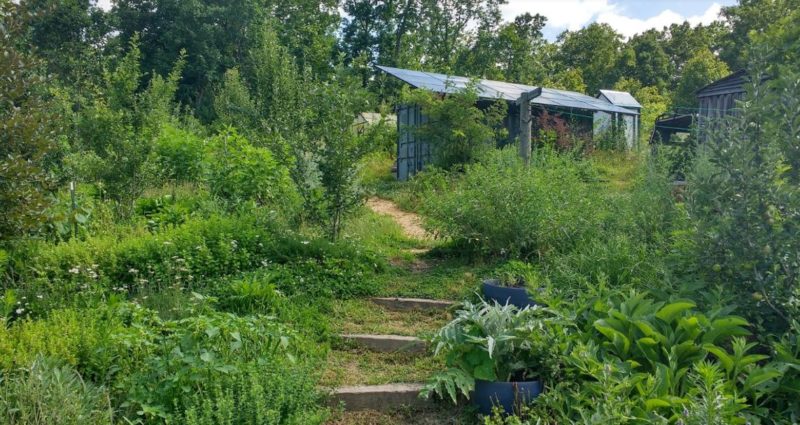
When you love your chosen mode of living, you don’t need constant entertainment, shopping, and excess stuff to distract you. By focusing on the homesteading activities and possessions that bring you happiness, fulfillment, and greater freedom, you can become a true minimalist homesteader too!


